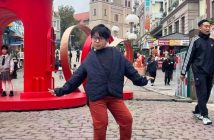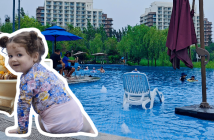
Still reeling from this past spring’s earthquake and tsunami as well as a generally sluggish economy, Japan has had a tough time in 2011, but it remains as charming and inviting as ever – especially if you need a quick break from Beijing.
We took a trip to Tokyo last week (from September 10-15) and enjoyed a memorable five (and a half) days in the capital – a bit of a splurge money-wise, but not altogether unreasonable if you’re on a moderate budget: Our air tickets cost around RMB 4,500 each (including tax – prices double once the October holiday week hits) and the hotel worked out to be about RMB 1,200 a night (including service charge and tax)
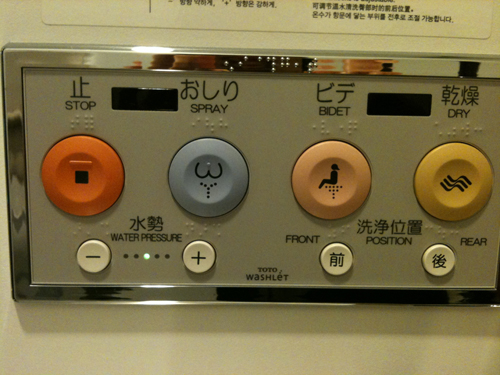
Sleek, modern and impeccably clean, Tokyo indeed deserves its reputation for being a world-class city. I spent a couple of days doing "Daddy Time" wandering around the capital with my daughter (while Mama worked) and found it to be fantastically kid-friendly. Case in point: Even the men’s room stalls had baby chairs where harried dads could deposit their toddlers while taking care of business; and, yes, it’s true what they say about the bidets – every public bathroom comes equipped with latest in cutting-edge spray technology toilets – you’ll never feel cleaner in your life.
Unfortunately all this niceness comes at a price: Tokyo is expensive, especially by Beijing standards – a bottle of water costs anywhere between RMB 10-20 (¥100-200 Japanese Yen) and cab fares start off at around RMB 70 (¥710 Japanese Yen) for the first two kilometers and shoot up from there. Eating can get even pricier if you’re in the expensive parts of town (i.e. Roppongi, Shibuya, Akasaka etc.), but with a little foresight and knowing where to look, you can still have a good time without cleaning out your account.
Cabs are plentiful but definitely not worth the price if you’re on a budget – flagfall is ¥710 for the first two kilometers so just getting in a can means you’re out over RMB 70. Fortunately Tokyo’s extensive subway system is much less expensive and makes getting from attraction to attraction relatively easy – fares are calculated based on distance (typically RMB 16-19, or ¥160-190 a trip) and like here in Beijing you can purchase tickets at automatic dispensers that come with English instructions. Station attendants with rudimentary English are always on hand to help if need be.
Just about every attraction we visited was within reasonable walking distance of the subway stations, which means doing Tokyo with kids – especially younger ones – is entirely feasible. Here are some of the more notable places we checked out:
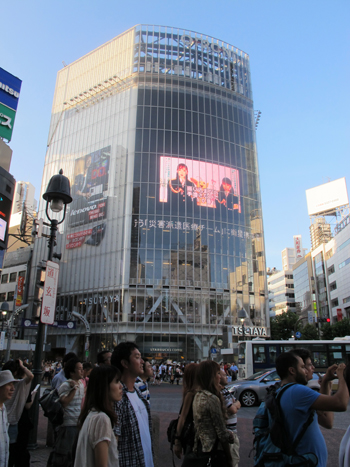
1. Shibuya Crossing: Our first stop was the famous Shibuya crossing, probably the busiest intersection in the world made famous in countless TV shows and movies, including Lost in Translation. It’s really more of a photo-opp than an outright attraction, but we enjoyed staring at the rush-hour crowds of white collar workers and trendy young people from the window of the Starbucks overlooking the crossing (despite the right-wing anti-China rally going on in the adjoining plaza).
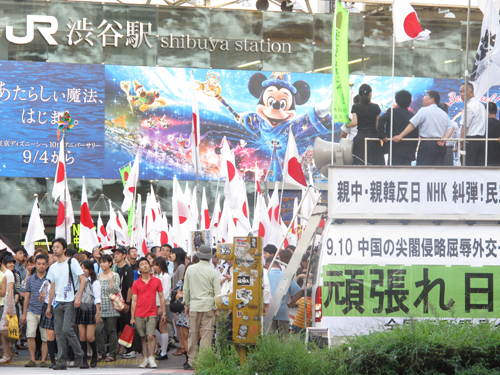

2. Ramen, grilled shellfish and the best-damned-raw-fish-you’ll-ever-have: Our most memorable meal in Tokyo was at a funky little izakaya in Akasaka where we feasted on fresh grilled jumbo shrimp, scallops and the best-damn-sashimi-plate (Oeseki) I’ve ever had.
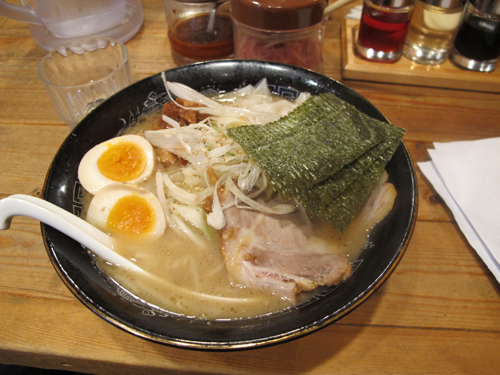
But since raw fish and toddlers don’t exactly mix, you can rest assured that feeding younger kids in Japan is rarely a challenge – especially with all the ramen (Japanese "Chinese-style" noodle soup, typically costing between ¥600-1,500 or RMB 60-150 a bowl), which we had at least once a day and generally found to be tasty and filling (save for a little oily, but hey, we live in Beijing, so who’s to say?). And if you simply can’t handle any more Japanese cuisine, Western food (especially sandwiches and pizza) abounds – we munched on everything from bagels and spaghetti to burgers and iced mochas during our trip and found the food quality to be excellent overall.
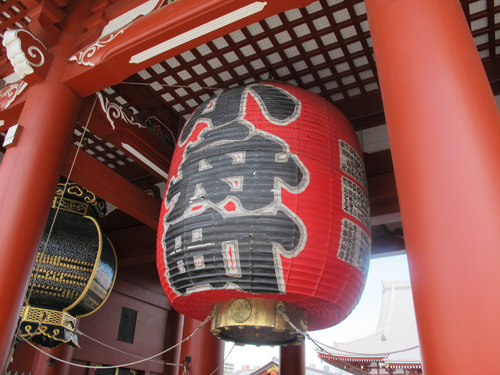
3. Asakusa and Senso-ji Temple: Beneath Tokyo’s hyper-modern exterior lies a tradition-steeped soul, one that is perhaps best embodied in Senso-ji Temple in Asakusa district. Dedicated to the Bodhisattva Kannon (or Guan Yin in Chinese) and known for the iconic giant red lantern that hangs in the main gate, the temple and surrounding grounds are picturesque, but often overrun with tourists – aside from Shibuya, this was easily the most crowded place we visited in Tokyo (China-based travelers accustomed to the frenzied mobs at domestic Chinese tourist attractions may find it palatable nonetheless). Despite what the guidebooks say, the Hanayashiki shopping street that leads to the main temple gate is entirely unremarkable, filled with shops selling the usual tourist tchochkes – skip it.

4. The Imperial Palace and Gardens at Chiyoda: Don’t go expecting a Forbidden City experience (complete with crowds and barking tour guides) – Tokyo’s imperial palace is a much simpler, if not austere, experience and easily do-able with a small child in tow. The main palace complex is off-limits to the general public (except on New Years and the Emperor’s birthday) but the real attraction are the surrounding walls and moats, as well as the outer gardens and Kitanomaru Park (site of the Tokyo science museum and a stunning display of cherry blossoms in the spring). We spent a couple of hours wandering the garden and marveling at the stone walls surrounding the palace but unfortunately had to skip taking a photo at the famous Nijusbashi Bridge due to sheer exhaustion.
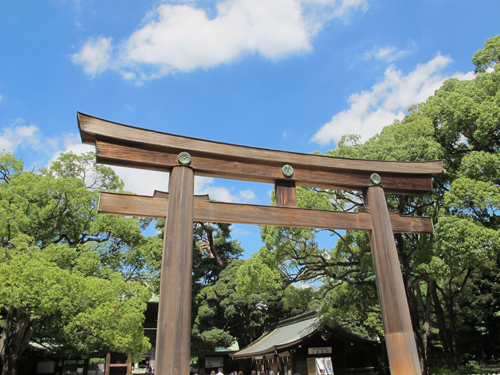
5. Meiji Shrine: Aside from the incredible seafood (see above), the highlight of our trip was visiting Meiji Shrine (明治神宮, Meiji Jingū), located just north of Shibuya. Set in a beautiful 700,000 square-meter forest park, this Shinto shrine was completed in 1921 in memory of the Meiji Emperor who was credited with modernizing Japan. Walking along the forest paths beneath the huge wooden archways (Torii) is as dramatic as it is beautiful – if there’s only one attraction you can visit in Tokyo, this is it.
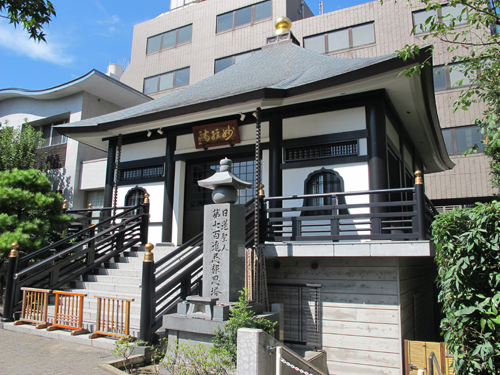
6. Aside from Meiji Shrine, Tokyo is dotted with various smaller Shinto shrines, including the Nogi Shrine in Roppongi and the Hikawa Jinja Shrine in Akasaka. Both are peaceful (if not a little eerie) urban oases and worth checking out if you have the time.
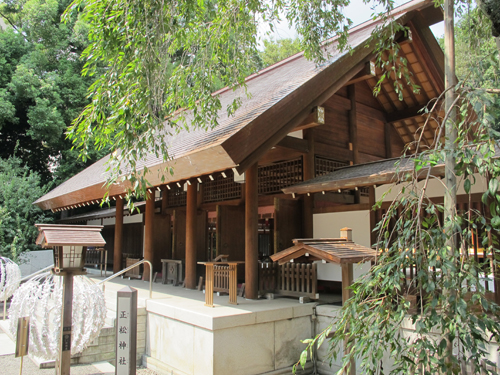
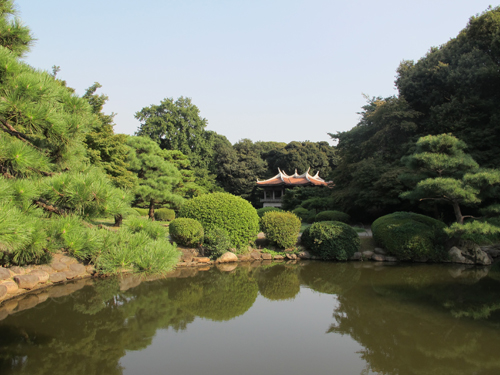
7. Shinjiku Gyoen: With a lovely traditional Japanese garden at its heart, this tranquil park was constructed on the estate of a feudal lord during the Edo period (1603-1867) and was "completed in 1906 as an imperial garden" with Western and traditional Japanese landscaping styles. When we visited, young couples and sunbathers were spread out on the lush green lawns, but our daughter was mostly entertained by the large black raven that followed us throughout our stroll feeding off the breadcrumbs from her half-eaten bagel.
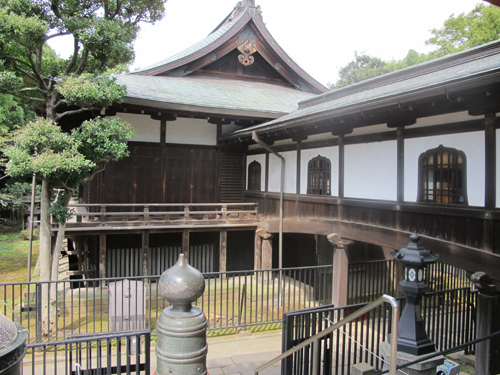
8. Ueno Park: Although we didn’t get a chance to hit up the Tokyo National Museum, Shinobazu Pond, the National Science and the Metropolitan Art Museums or the Ueno Zoo, we did stop by to pay our respects at the Kiyomizu Kannon-do Temple, another well-known temple dedicated to the Bodhisattva Kannon (Guan Yin) where young couples go to pray for their babies-to-be. The park itself looks fantastic and reminded me a lot of Central Park, but unfortunately our tight schedule limited us to just a quick look and prayer at the temple – we’ll definitely come back next time we’re in Tokyo.

9. Roppongi Hills: Malls are about as interesting to me as doing the dishes, and this one was no exception, save for the observation deck on the 56th floor of the Mori Tower. I took Marianne here on "Daddy Day no. 1" and forked over RMB 2,000 for a decent city view and admission to the (underwhelming) "Sky Aquarium" (the attached Mori Art Museum was closed that day). I took the opportunity to snap some nice vista shots of Tokyo, but Marianne was much more interested in the nearby Robot Park, a small playground featuring crazy robot-themed swings and slides that’s just a five-minute walk away.
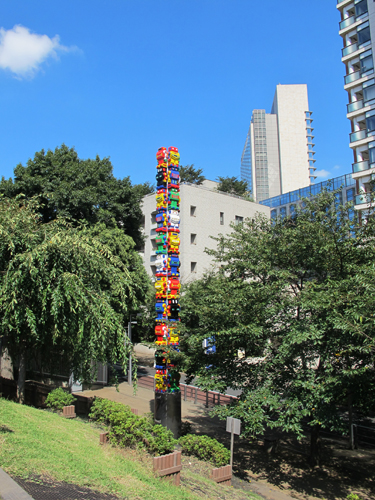

10. Zojoji Temple and Tokyo Tower: The Tokyo Tower comes across as a strange knock-off of the Eiffel Tower and is mainly good for a background shot, but more interesting is the adjacent Zojoji Temple, built in 1605 and dedicated to the Jodo-Buddhist sect (a.k.a. the Pure Land Sect). This fully functioning temple has an interesting garden filled with small stone statues representing the jizobosatsu (a type of Buddhist angel that guards over stillborn chidlren) – even with the tourists, it’s a sullen, spooky place.
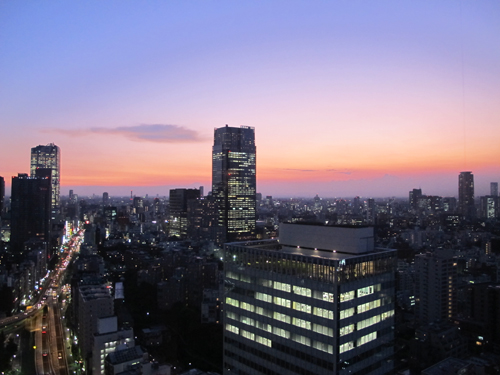
Tokyo offers many, many more places (the Tsukiji fish market, Tokyo Disneyland, Mt Fuji) to visit than we had time to visit, but if there was just one additional spot to cram in it would have been Kamakura, a scenic town located about an hour south of the city and home of the famous Daibatsu Buddha and numerous shrines and temples. Definitely missed out on this one, but there’s always next time.

